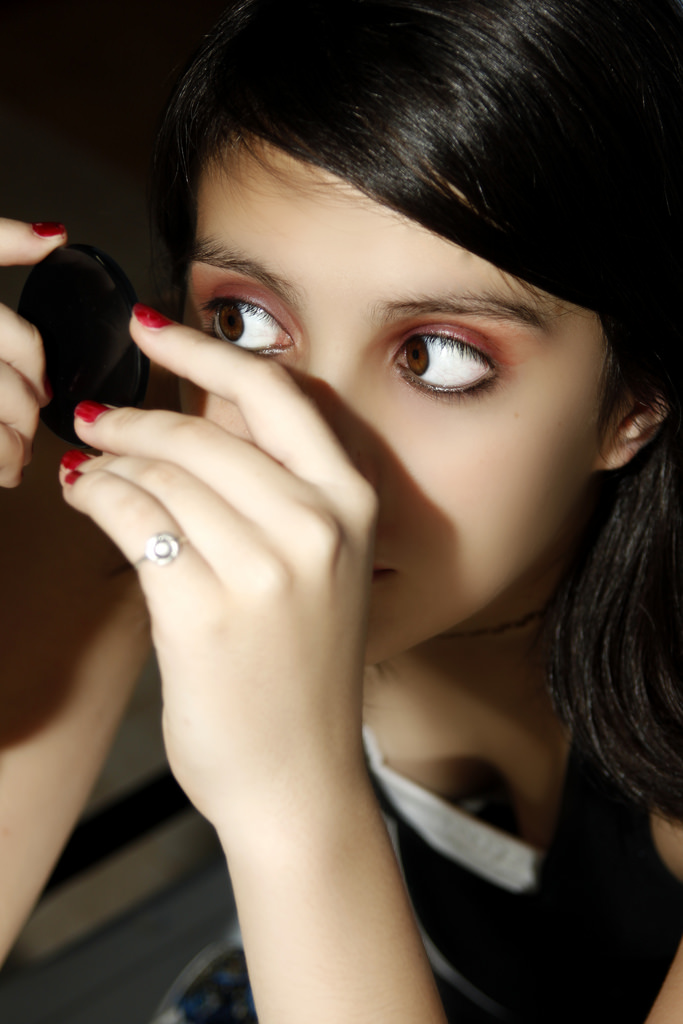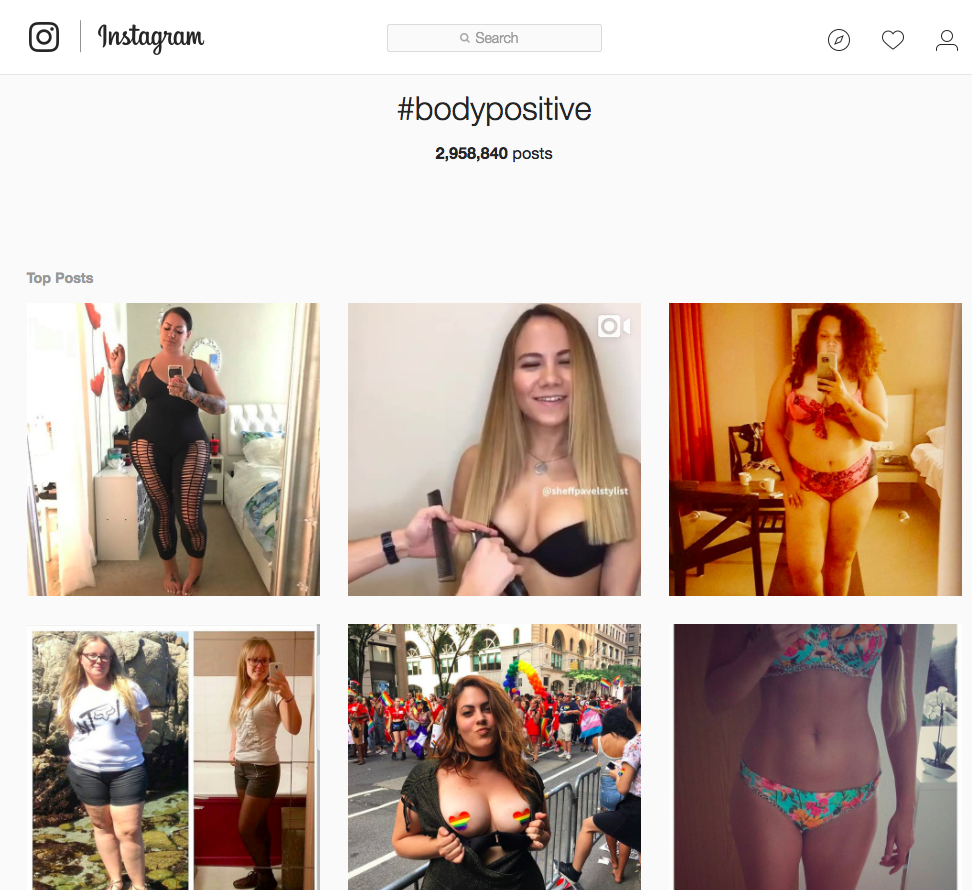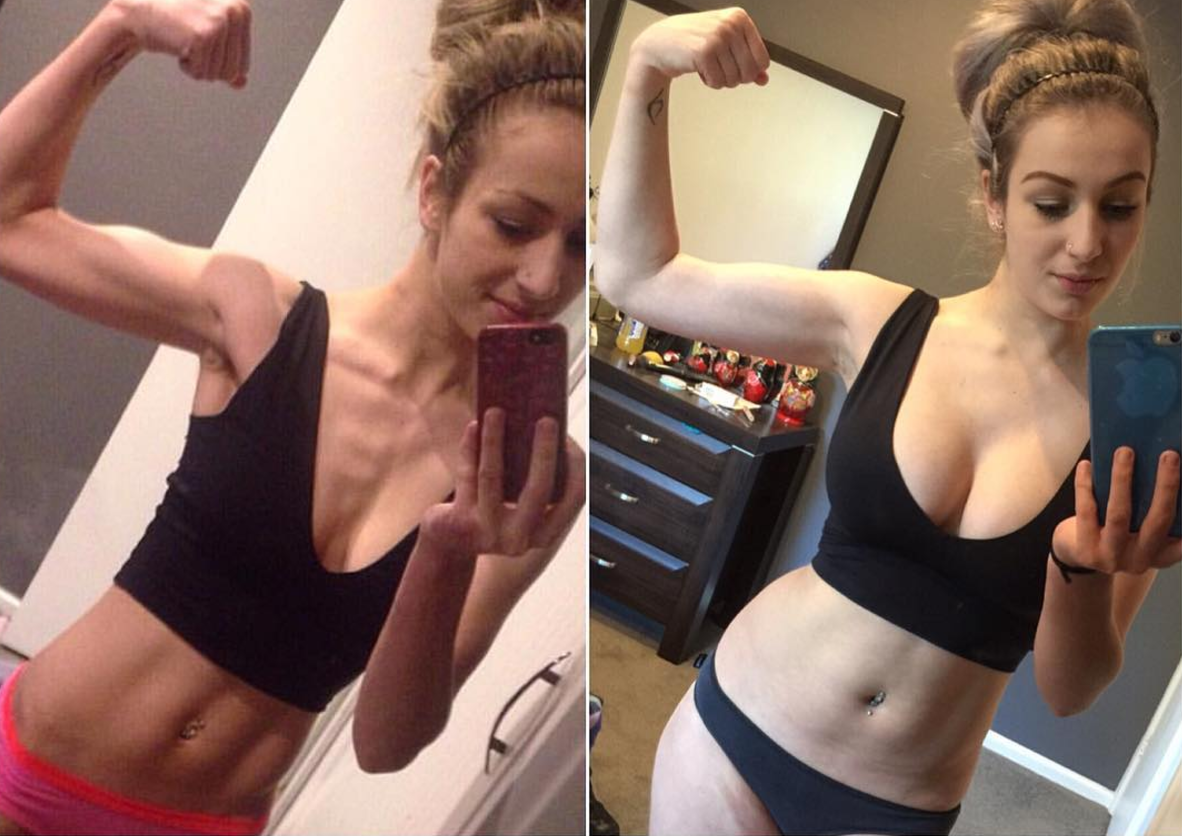These Before and After Photos Reveal a Major Shortcoming of the Body Positivity Movement

By:
For girls, body insecurity starts early.
 Flickr - flickr.com
Flickr - flickr.com
According to National Eating Disorders Association, girls start to express concerns about their weight or shape by the age of six, leading to more than 20 million women suffering from an eating disorder in the United States.
In response to these societal pressures, a resistance campaign was born; the body positive movement.
Connie Sobczak and Elizabeth Scott formed The Body Positive in 1996 in order to help women form a "more balanced, joyful self-care, and a relationship with their whole selves that is guided by love, forgiveness, and humor." In recent years, the body positive movement has grown beyond Sobczak's and Scott's organization and inspired countless articles and social media posts.
The movement has made great strides to dismantle body shaming and unrealistic beauty standards. However, like any campaign, it has its problems.
 Instagram - instagram.com
Instagram - instagram.com
One such issue is the community’s use of ‘before and after’ photos to show the progress made from ‘before’ when the individual was thin and unhappy, to ‘after’ when the individual is body positive and happy. Although these photos may seem like a positive representation of the progress one can make with regards to body image, they actually contradict the core values of the body positive movement.
Here are the two ways before and after photos are hurting the body positive movement rather than helping it.
1. They Promote Body Comparisons.
One of the main staples of the body positive movement is the belief that people do not need to change their bodies in order to be at peace with them. As their website states, "[Sobczak] founded The Body Positive [...] to ensure that her daughter Carmen and other children would grow up in a new world—one where people focus on changing the world, not their bodies."
And yet, many images tagged with the #bodypositive depict side-by-side photos that compare two bodies. The before images are typically captioned with feelings of negativity and insecurity, and the after photos are accompanied by feelings of positivity and happiness.
 @healthycaits via Instagram - instagram.com
@healthycaits via Instagram - instagram.com
The intention is to inspire women to stop forcing themselves to look a certain way, but what happens when a woman has a body that is similar to the ‘before’ photo naturally? What happens when a woman has a body that is similar to the ‘before’ photo because she is currently suffering from an eating disorder? What happens when a woman has a body similar to the ‘before’ photo because she is suffering from an illness that has resulted in weight loss? Now these women associate the way they look with negativity and insecurity.
Rather than represent body acceptance, these photos just further promote the concept that there are ‘good’ and ‘bad’ bodies.
2. They Cause Feelings Of Inadequacy.
Stories of women attaining body positivity success are often marked by their ability to learn to love their "flaws," such as cellulite and stretch marks, no matter what.
Take for example a recent roundup in Self Magazine, which celebrates the "Summer of Cellulite." The story features Instagram photos tagged with captions like "There is beauty in all things natural 🌹. Even when those things bust thru ya favorite booty shorts 😩." and "And this summer cellulite or not I'm wearing what I want!"
Again, these are all well-intentioned, but there’s no explanation of how these women ended up loving their body that they previously claimed to hate. Does it happen overnight? Is there some hidden switch that erases every single harmful body standard we have ever experienced? If not, then this immediate jump to body positivity leaves any woman who can’t instantly start loving herself feeling inadequate.
 @bodypositiveteen via Instagram - instagram.com
@bodypositiveteen via Instagram - instagram.com
Additionally, forcing constant feelings of positivity and self-love is unrealistic and sets up any woman who has a day where she doesn’t love her cellulite or her tummy rolls to feel like a failure.
Body positivity is not a fixed emotional state and presenting it as such has consequences when women don’t feel amazing about all their bodies all the time.
The focus of the body positive movement should not be on reaching some unattainable goal of ever-present happiness. It won't happen no matter how many times you say you love yourself in a day, just like it won't happen no matter how much you diet. To be human is to be flawed and that's okay. The point of the body positive movement should be to help people realize that they don't need to demonize their flaws or deify them, but to normalize them.
